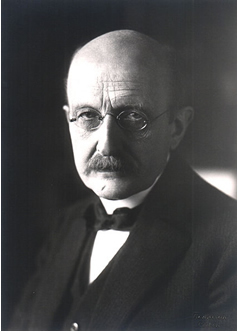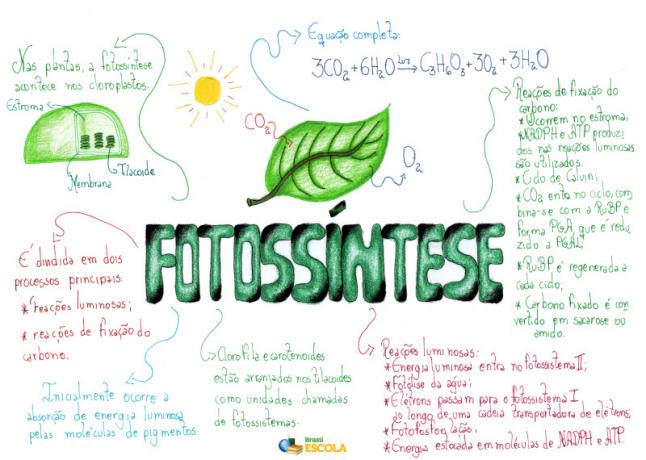Seeking to explain the nature of light, Scottish scientist James Clerk Maxwell (1831-1879) proposed the theory that light would consist of electromagnetic waves. Thus, the different visible (colors) and invisible (gamma rays, X-rays, ultraviolet, infrared, microwave and radio waves) would be distinguished by having wavelengths and different frequencies.
The wavelength is the distance of two consecutive peaks in a wave and is represented by the Greek letter lambda “λ”. Frequency (f) is the number of oscillations of the electromagnetic wave per second. These two quantities are inversely proportional, the shorter the wavelength, the higher the frequency and energy of the radiation.
This way of studying and understanding light explained many phenomena, such as the way in which it was propagated.
However, there were some aspects that this theory did not explain, the main one being the color that certain objects emitted when they were heated. Every object that is at room temperature is visualized because it reflects radiation at a certain frequency and at a certain wavelength that corresponds to its color (visible light). However, in the case of objects that are at extremely high temperatures, they don't reflect any light that has fallen on them, but emit their own light in sufficient intensity for us to visualize.
For example, iron changes color as its temperature increases. It turns red first, then yellow, then white, and at extremely high temperatures white turns slightly blue.
In studying this phenomenon, scientists measured the intensity of radiation at each wavelength and repeated the measurements for a range of different temperatures. German physicist Gustav Robert Kirchhoff (1824-1887) discovered that this emitted radiation it just depended on the temperature, not the material.
An object that acts in this way came to be called by scientists as black body. He no it is called so because of its color, as it is not necessarily dark, on the contrary, it often glows white. This name comes from the fact that the object does not favor the absorption or emission of a wavelength, since while white reflects all colors (visible radiation at various wavelengths), black reflects none color. The blackbody absorbs all the radiation that falls on it.
So when scientists sought to explain the laws of black body radiation, the data obtained experimentally proved incompatible with Maxwell's wave theory. Worse than that, the results pointed to a catastrophic situation, which became known as the ultraviolet catastrophe. Classical physics said that any black body at any non-zero temperature should emit very intense ultraviolet radiation, the which means that the heating of any object would lead to devastation around it through the emission of high radiation frequencies. Including a human body with a temperature of 37°C would glow in the dark!
But we know that doesn't happen in everyday life, so what would be wrong?
The correct explanation came in 1900 by German physicist and mathematician Max Karl Ernest Ludwig Planck (1858-1947), who said that the energy would not be continuous, as previously thought. His theory basically said:
"Radiation is absorbed or emitted by a heated body not in the form of waves, but through small 'packets' of energy."

German physicist Max Planck circa 1930
These little “packages” of energy Max Planck named quantum (its plural is how much), which comes from Latin and means “quantity”, literally “how much?”, passing on the idea of a minimal, indivisible unit; since the quantum it would be a definite unit of energy proportional to the frequency of radiation. That's when the expression quantum theory.
currently a quantum it's called photon.
In addition, this scientist provided a function that made it possible to determine the radiation of oscillating particles that emit radiation in a black body:
E = n. H. v
Being that:
n = positive integer;
h = Planck's constant (6.626). 10-34 J. s - very small value compared to the energy required to carry out physical or chemical changes in everyday materials. This shows us that “h” refers to a very small world, the quantum world);
v = frequency of emitted radiation.
![Quantum Theory of Max Planck Stamp printed in Germany (1994) showing the discovery of Max Planck's quantum theory[2]](/f/4231d982fcf71c7d9fa2774ca7505c1a.jpg)
Stamp printed in Germany (1994) showing the discovery of Max Planck's quantum theory[2]
Planck's constant is one of the most important constants in the quantum world, as it is fundamental for understanding various physical and chemical concepts and interpretations.
This theory shows that radiation of frequency “v” can be regenerated only if an oscillator of such frequency has acquired the minimum energy necessary to start the oscillation. At low temperatures, there is not enough energy available to induce high frequency oscillations; in this way, the object does not regenerate ultraviolet radiation, ending the ultraviolet catastrophe.
Albert Einstein used this Max Planck hypothesis to explain the results obtained in his work on the photoelectric effect in 1905.
Max Planck is considered the father of quantum theory, which earned him the Nobel Prize in Physics in 1918.
Thus, it is important to point out that the model of the wave-particle duality of matter. This means that both theories are used to explain the nature of light: the wave and the corpuscular.
The wave theory explains some light phenomena and can be demonstrated by certain experiments, while the wave theory that light is composed of tiny particles of energy explains other phenomena and can be proven by others experiments. There is no experiment that demonstrates the two natures of light at the same time.
Therefore, both theories are used, according to the phenomenon being studied.

–––––––––––––––––––––––––––––––––––––––
* Editorial credits for the images:
[1] catwalker / Shutterstock.com
[2] Boris15 / Shutterstock.com
By Jennifer Fogaça
Graduated in Chemistry
Source: Brazil School - https://brasilescola.uol.com.br/quimica/teoria-max-planck.htm


